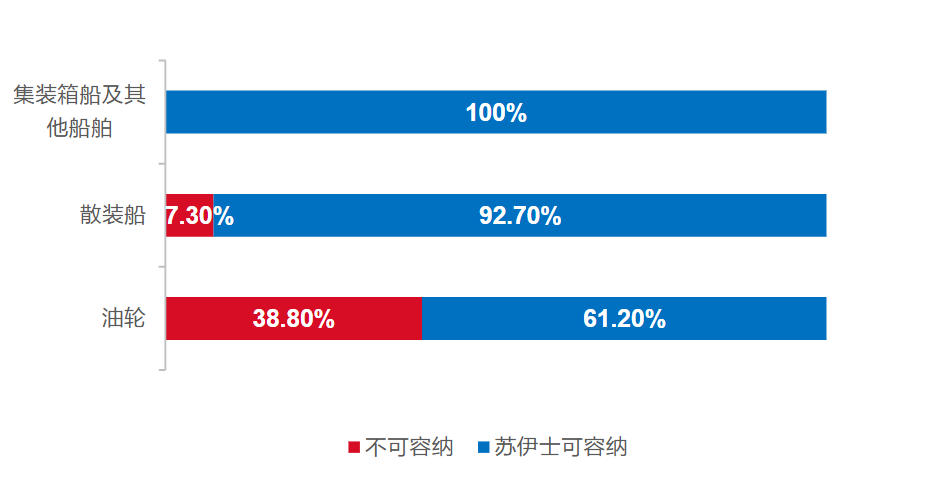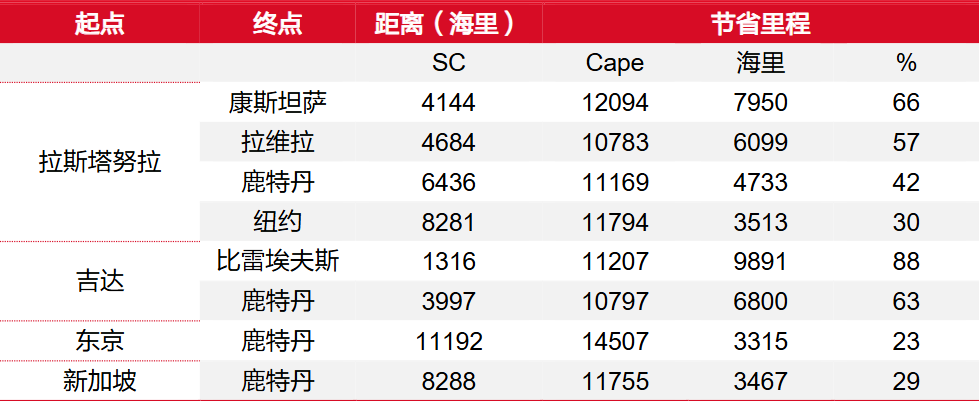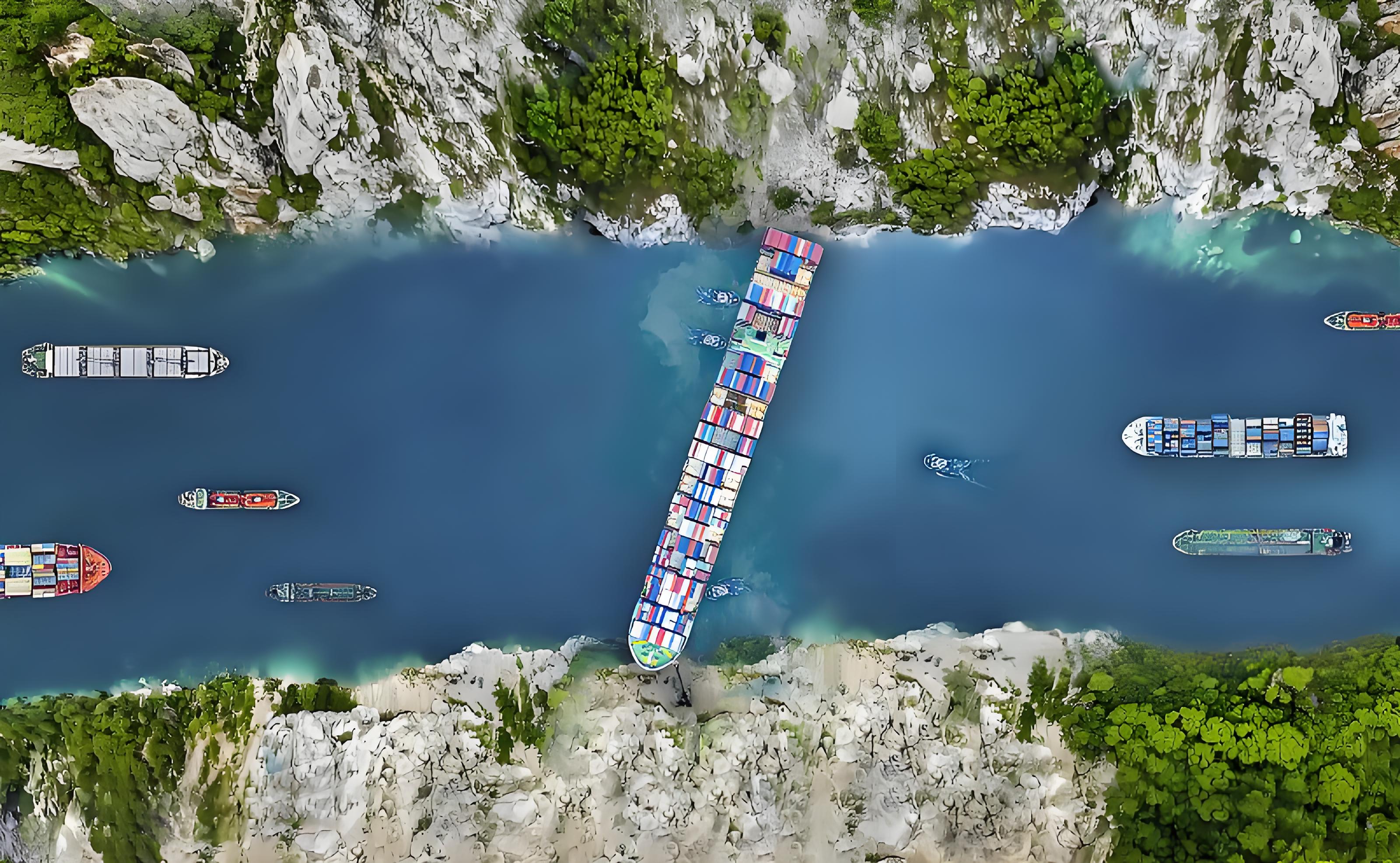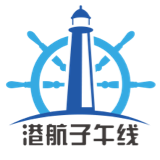Not Only Panama! Trump Says US Ships Also Need Free Travel Through Suez Canals! 不止巴拿马!苏伊士运河通行费美国也要“零元购”?
Not Only Panama! Trump Says US Ships Also Need Free Travel Through Suez Canals!
不止巴拿马!苏伊士运河通行费美国也要“零元购”?
Xinhua News Agency, Washington, April 26th—On April 26, President Trump claimed on social media that American warships and commercial vessels should be allowed to transit the Panama Canal and the Suez Canal for free. In a post on “Truth Social,” Trump stated, “Without the U.S., these canals would not exist,” and said he had asked Secretary of State Rubio to address the matter immediately.
新华社华盛顿4月26日电 美国总统特朗普26日在社交媒体上发文,宣称美国军舰和商船都应该被允许免费通行巴拿马运河和苏伊士运河。特朗普在“真实社交”平台上称,“如果没有美国,这些运河就不可能存在”,表示已要求美国国务卿鲁比奥立即处理此事。
The Panama Canal, located in Latin American Panama, serves as a vital link between the Atlantic and Pacific Oceans. The Suez Canal in Egypt is a strategic chokepoint connecting the Mediterranean and Red Seas. Trump has previously threatened not to rule out the use of military force to seize control of the Panama Canal. U.S. media suggest that Trump’s latest remarks indicate his intention to expand American influence over key global commercial and military waterways.
拉美国家巴拿马领土上的巴拿马运河是连接大西洋与太平洋的要道,埃及的苏伊士运河则是连接地中海和红海的要冲。特朗普此前已经多次威胁不会排除使用军事力量夺取巴拿马运河的可能性。美国媒体指出,特朗普此番发言再次表明其欲扩大美国对全球关键商业和军事水道的影响力。
On the same day, Panamanian President Mulinu stated on social media that the “Treaty of Perpetual Neutrality and Operation of the Panama Canal” and the “Panama Canal Authority Organization Law” regulate all vessel procedures and fees through the canal, with no contrary agreements. He emphasized that any cooperation matters should be determined by the Panama Canal Authority in accordance with the aforementioned regulations. Since 1956, the Suez Canal has been under Egyptian control. Previously, around 10% of global maritime trade passed through it until Houthi attacks on vessels in Yemen began. The U.S. and some other countries intervened. The report noted that the decline in Suez Canal traffic has led to a significant reduction in Cairo’s foreign exchange earnings from the canal, plunging Egypt into a severe economic crisis.
巴拿马总统穆利诺26日在社交媒体上发文称:“《关于巴拿马运河永久中立和经营的条约》和《巴拿马运河管理局组织法》规范了所有船只通过运河的手续及费用,不存在任何相反的协议。有关合作事宜应由巴拿马运河管理局依据上述规定设定。”苏伊士运河自1956年以来一直由埃及控制,此前集中了全球约10%的海上贸易,直到也门的胡塞武装开始袭击船只。美国与其他一些国家对此进行了干预。报道提及,由于苏伊士运河运输量下降,导致开罗的一个重要外汇来源收入大幅减少,埃及陷入了严重的经济危机。
Suez Canal
苏伊士运河
Ⅰ Geographical Location and Natural Features
一、地理位置与自然特征
The Suez Canal is situated in northeastern Egypt, spanning the Sinai Peninsula. It starts at Port Said on the Mediterranean coast and ends at Suez City in the Gulf of Suez, Red Sea, serving as the natural boundary between Asia and Africa. Its geographical coordinates are 28°03′N, 33°34′E, with a total length of about 193.3 kilometers.
苏伊士运河位于埃及东北部,横贯苏伊士地峡,北起地中海沿岸的塞得港(Port Said),南至红海苏伊士湾的苏伊士城(Suez City),是亚洲与非洲的天然分界线。其地理坐标为北纬28°03′、东经33°34′,全长约193.3公里。

图源网络
Climate Type: The northern coastal area features a subtropical Mediterranean climate, with hot and dry summers, mild and rainy winters (average temperature 12 -26℃, annual precipitation 50 -200 millimeters). The southern and inland regions have a tropical desert climate, with significant day - night temperature differences and an average annual precipitation of less than 50 millimeters.
Hydrological Characteristics: The canal is a lock-free sea-level waterway, directly connecting the Mediterranean and Red Seas, with similar water levels (average depth of 24 meters) and free-flowing seawater. Lacking river inflows, the canal’s water entirely depends on the ocean.
气候类型:北部沿海地区属亚热带地中海气候,夏季炎热干燥,冬季温和多雨(年均气温12-26℃,降水量50-200毫米);南部及内陆为热带沙漠气候,昼夜温差大,年均降水量不足50毫米
水文特征:运河为无闸海平面水道,直接连通地中海与红海,水位相近(平均深度24米),海水自由流动。由于周边无河流汇入,运河水体完全依赖海洋。
Ⅱ Historical Evolution and Construction
The history of the Suez Canal dates back to the 13th century BC when Pharaoh Seti I of ancient Egypt first conceived the idea of connecting the Red Sea and the Mediterranean. In the 7th century BC, Pharaoh Necho II attempted canal construction but failed due to technological limitations. In 522 BC, Persian King Darius I completed an ancient canal linking the Nile River and the Red Sea.
Modern canal construction began in the 19th century:
In 1854, French diplomat Ferdinand de Lesseps secured a concession from the Egyptian khedive to establish the Suez Canal Company.
From 1859 to 1869, a 10 - year construction period involved approximately 1.2 million Egyptian laborers, with 120,000 dying from harsh working conditions. The canal officially opened on November 17, 1869. Initially, it was 8 meters deep and only allowed vessels of 5,000 deadweight tons to pass.
Control Changes:
In 1875, Britain purchased Egyptian shares and, along with France, controlled the canal after occupying Egypt militarily in 1882. In 1956, Egyptian President Nasser nationalized the canal, sparking the Suez Crisis.
二、历史沿革与建设历程
苏伊士运河的历史可追溯至公元前13世纪,古埃及法老塞提一世(Seti I)首次提出连接红海与地中海的构想。公元前7世纪,法老尼科二世(Necho II)尝试开凿运河,但因技术限制未果。公元前522年,波斯国王大流士一世完成了一条连接尼罗河与红海的古运河。
现代运河的建设始于19世纪:
1854年:法国外交官费迪南·德·雷赛布(Ferdinand de Lesseps)获得埃及总督特许,成立苏伊士运河公司。
1859-1869年:10年建设期,动用约120万埃及劳工,其中12万人因恶劣工作条件丧生。运河于1869年11月17日正式通航,初期水深8米,仅允许5,000载重吨船舶通行。
控制权变迁:1875年英国购入埃及股份,1882年军事占领埃及,与法国共同控制运河。1956年,埃及总统纳赛尔宣布运河国有化,引发苏伊士危机。
Ⅲ Structure and Navigation Capacity
After multiple expansions, the Suez Canal has become one of the world’s busiest artificial waterways:
It is 193.3 kilometers long, 313 meters wide at the surface (with the narrowest point at 205 meters), and 24 meters deep. It can accommodate vessels up to 240,000 deadweight tons, such as Suezmax oil tankers. Being lock - free, vessels are limited to a speed of 12 -14 kilometers per hour.
Expansion Projects:
In 2015, the New Suez Canal project was completed, adding 35 kilometers of parallel channels for two - way traffic. Transit time was reduced from 18 to 11 hours, and the daily vessel capacity increased from 49 to 97.
Navigation Statistics:
Globally, 61.2% of oil tankers, 92.7% of bulk carriers, and all container ships can pass through, accounting for 12% of global trade, 30% of container transport, and 10% of oil shipping by sea.
三、结构与通航能力
苏伊士运河经过多次扩建,现为全球最繁忙的人工航道之一:
总长193.3公里,水面宽度313米(最窄处205米),水深24米,可通行最大载重24万吨的船舶(如苏伊士型油轮)。全程无船闸,船舶限速12-14公里/小时。
扩建工程:2015年完成新苏伊士运河项目,新增35公里平行航道,实现双向通航,通行时间由18小时缩短至11小时,日均通过船舶从49艘增至97艘。
通航占比:全球61.2%的油轮、92.7%的散货船及所有集装箱船均可通行,承载全球12%的贸易量、30%的集装箱运输及10%的原油海运。
符合苏伊士运河的满载船统计

图源网络
Ⅳ Global Trade and Shipping Impact
Shortened Routes and Economic Value:
The canal shortens the Europe - Asia voyage by about 7,000 -8,000 kilometers (e.g., London to Mumbai saves 5,500 -8,000 kilometers), saving the shipping industry approximately $1.5 billion in annual fuel costs.
In 2023, canal tolls contributed $7.2 billion to Egypt’s economy (14% of foreign exchange earnings), with daily tolls averaging about $2 million.
Supply Chain Core Node:
Around 52 vessels pass through daily, transporting 8% of the world’s liquefied natural gas (LNG), 10% of petroleum products, and 30% of containers.
The 2021 vessel grounding incident caused daily global trade losses of $9.6 billion, a 46% surge in shipping costs, and supply chain disruptions affecting 145 countries.
Geostrategic Significance:
As the Red Sea crisis intensifies, more shipping companies are rerouting via the Cape of Good Hope, leading to longer voyages, extended timeframes, and reduced market vessel supply, which in turn drives up shipping costs.
The Suez Canal’s location makes it the shortest route between the East and West compared to the Cape of Good Hope. The Suez route saves 20% -90% of the voyage compared to the Cape route. Even with increased speed to mitigate time losses from longer voyages, navigation time still increases. In addition to higher fuel costs from the extended Suez route via the Cape of Good Hope, vessels also face potential fines for delayed deliveries.
四、对全球贸易与航运的影响
缩短航程与经济价值:
欧洲至亚洲的航程缩短约7,000-8,000公里(如伦敦至孟买节省5,500-8,000公里),每年为航运业节省约150亿美元燃料成本。
2023年,运河通行费为埃及贡献72亿美元收入(占外汇收入的14%),日均通行费约200万美元。
供应链核心节点:
每日约52艘船舶通过,运输全球8%的液化天然气(LNG)、10%的石油产品及30%的集装箱。
2021年船舶搁浅堵塞事件导致全球贸易日损96亿美元,海运成本飙升46%,供应链中断波及145个国家。
地缘战略意义:
随着红海危机进一步加剧,更多船舶公司改道好望角,航程拉远、时间拉长、市场船只运力供给收缩提振航运成本。
苏伊士运河的地理位置使其成为与好望角相比东西方之间的最短路线,苏伊士航线可比好望角路线节约 20%-90%的航程不等。即使提高航速可降低一部分由较长航程造成的时间损失,但还是不可避免地增加了航行时间。由苏伊士航线改道好望角航线的船舶航程、航期的延长除带来燃油成本的增加外,还可能因延误交货期面临罚款风险。
Comparison of Suez (SC) Route and Cape (Cape) Route
苏伊士(SC)航线与好望角(Cape)航线对比

Data Source: Suez Canal Authority
资料来源:苏伊士运河管理局
Ⅴ Management and Operational Status
Suez Canal Authority (SCA): Established in 1956, it independently manages canal operations, sets navigation rules, and collects tolls. In 2025, SCA adopted flexible pricing and emergency services (such as vessel maintenance and pollution control) to address crises. The Suez Canal Authority charges vessels based on their type, tonnage, and cargo status using a progressive fee system. Tonnage is determined according to the Suez Net Tonnage (SC.N.T) system designated by an international committee at the 1873 Constantinople conference.
Suez Canal fees include transit fees, berthing fees, pilotage fees, trial voyage fees, tugboat fees, and other charges. On January 15, 2024, the Suez Canal Authority increased vessel transit fees by 5% -15%.
Recent Challenges:
In 2024, due to the volatile situation in the Red Sea, canal revenue dropped by 60%, and transiting vessels decreased by 49%. The SCA is advancing the Southern Canal Development Project to enhance capacity.
The 2021 Vessel Grounding Incident:
A 400 - meter - long container ship ran aground due to a sandstorm, blocking the canal for six days and affecting over 300 vessels. Direct losses exceeded $9.6 billion, and global trade growth dropped by 0.2% -0.4%. The international community called for diversified routes, and the SCA accelerated widening projects to accommodate larger vessels.
五、管理机构与运营现状
苏伊士运河管理局(SCA) :成立于1956年,独立管理运河运营,制定航行规则并征收通行费。2025年数据显示,SCA通过灵活定价、应急服务(如船舶维护、污染控制)应对危机。苏伊士运河管局根据通行船只的船型、吨位、载货状态实行累进制收费,吨位是根据
1873 年于君士坦丁堡举行的国际委员会指定的计量系统确定的苏伊士净吨位(SC.N.T)。苏伊士运河费用具体包括通行费、停泊费、引航费、试航费、拖船费以及其它费用,2024 年 1月 15 日,苏伊士运河管理局将船只通行费提高 5%-15%的决定正式生效。
近年挑战:2024年因红海局势动荡,运河收入同比下降60%,过境船舶减少49%。SCA正推动南部航道开发计划,以提升通行能力。
2021年船舶搁浅堵塞事件:
400米长的集装箱船因沙尘暴搁浅,阻断运河6天,影响300余艘船舶,直接损失超96亿美元,全球贸易增长率下降0.2-0.4%。国际社会呼吁多元化航线,SCA加速拓宽工程以容纳更大型船舶。

图源网络:苏伊士运河堵塞示意图
The importance of the Suez Canal and the Panama Canal goes without saying. In response to U.S. threats, Panamanian President Jose Raul Mulinu repeatedly stated that the Panama Canal and its adjacent areas forever belong to Panama. Panama’s sovereignty and independence are non - negotiable. The 1977 treaty between Panama and the U.S. recognized Panama’s sovereignty over the canal and the canal zone, and the U.S. officially returned the canal to Panama on December 31, 1999.
This time, Trump has set his sights on the Suez Canal, claiming that U.S. vessels should also have a “zero - cost” passage through the Suez Canal in Egypt. The Suez Canal is not only a geographical miracle but also a microcosm of the global economy and politics. Ensuring the smooth and secure operation of this “world’s throat” is of vital importance.
苏伊士运河和巴拿马运河的重要性不言而喻,面对美方威胁,巴拿马总统何塞·劳尔·穆利诺多次回应称,巴拿马运河及其毗邻区域永远属于巴拿马,巴拿马的主权和独立不容谈判。巴美两国1977年签订的条约已经承认巴拿马对运河及运河区的主权,美国最终在1999年12月31日将运河完全交还给巴拿马。
而此次特朗普又“盯上”苏伊士运河,大放厥词,美国船只在埃及苏伊士运河上航行的通行费也应该“零元购”。苏伊士运河不仅是地理奇迹,更是全球经济与政治的缩影,确保这一“世界咽喉”的畅通与安全显得格外重要。








